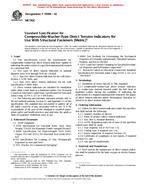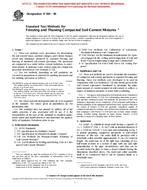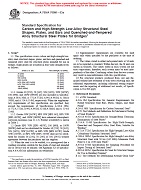1.1 This test method describes procedures for the tension testing of structural alloys in liquid helium. The format is similar to that of other ASTM tension test standards, but the contents include modifications for cryogenic testing which requires special apparatus, smaller specimens, and concern for serrated yielding, adiabatic heating, and strain-rate effects.
1.2 To conduct a tension test by this standard, the specimen in a cryostat is fully submerged in normal liquid helium (He I) and tested using crosshead displacement control at a nominal strain rate of 10-3 s-1 or less. Tests using load control or high strain rates are not considered.
1.3 This standard specifies methods for the measurement of yield strength, tensile strength, elongation, and reduction of area. The determination of the elastic modulus is treated in Test Method E 111.
Note 1 – The boiling point of normal liquid helium (He I) at sea level is 4.2 K (-452.1°F or 7.6°R). It decreases with geographic elevation and is 4.0 K (-452.5°F or 7.2°R) at the National Institute of Standards and Technology in Colorado, 1677 m (5500 ft) above sea level. In this standard the temperature is designated 4 K.
1.4 Values stated in SI units are treated as primary. Values stated in U.S. customary units are treated as secondary.
1.5 This standard does not purport to address all of the safety concerns, if any, associated with its use. It is the responsibility of the user of this standard to establish appropriate safety and health practices and determine the applicability of regulatory limitations prior to use. See Section 5.
Product Details
- Published:
- 08/10/2003
- Number of Pages:
- 9
- File Size:
- 1 file , 100 KB
- Redline File Size:
- 2 files , 190 KB


